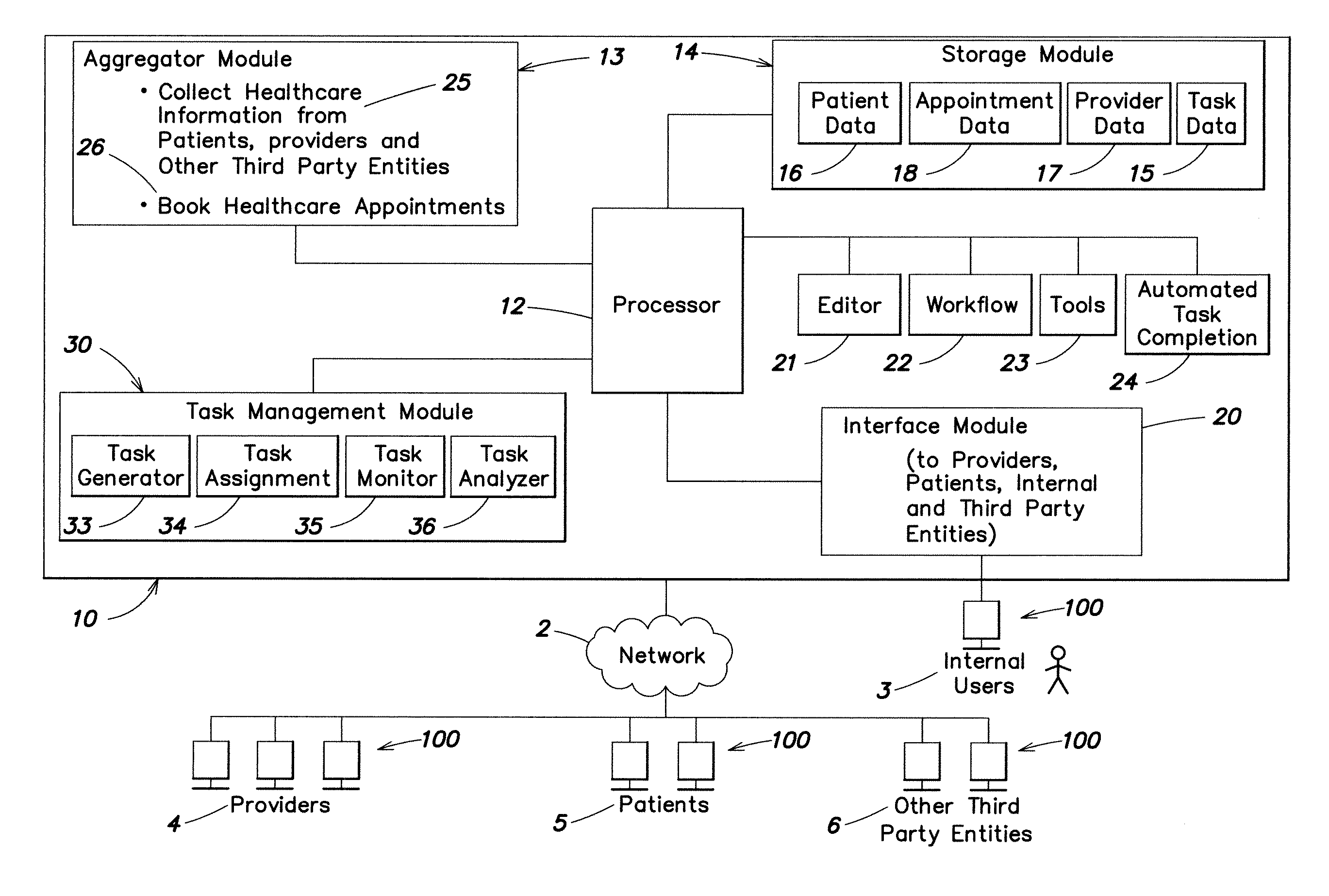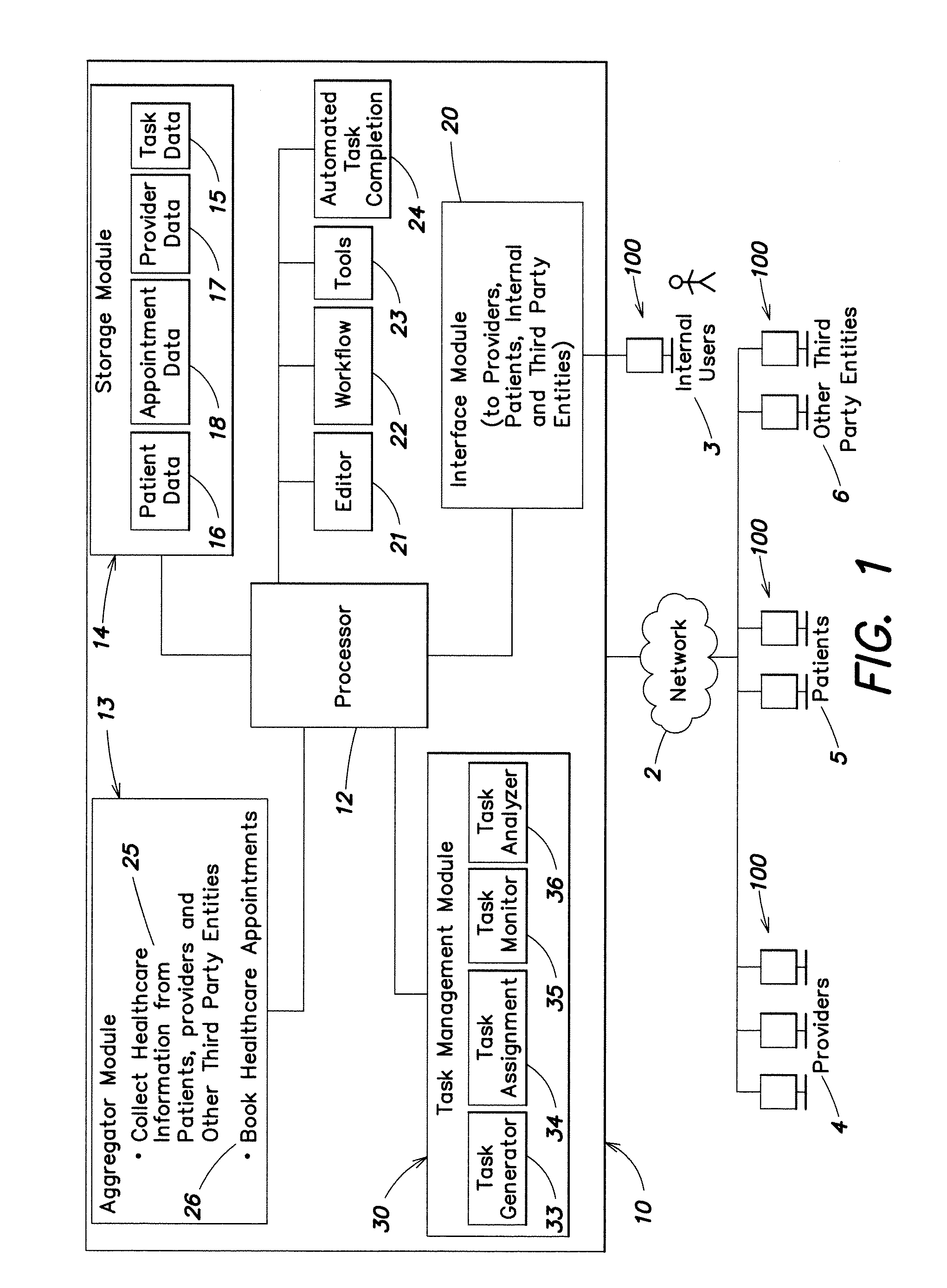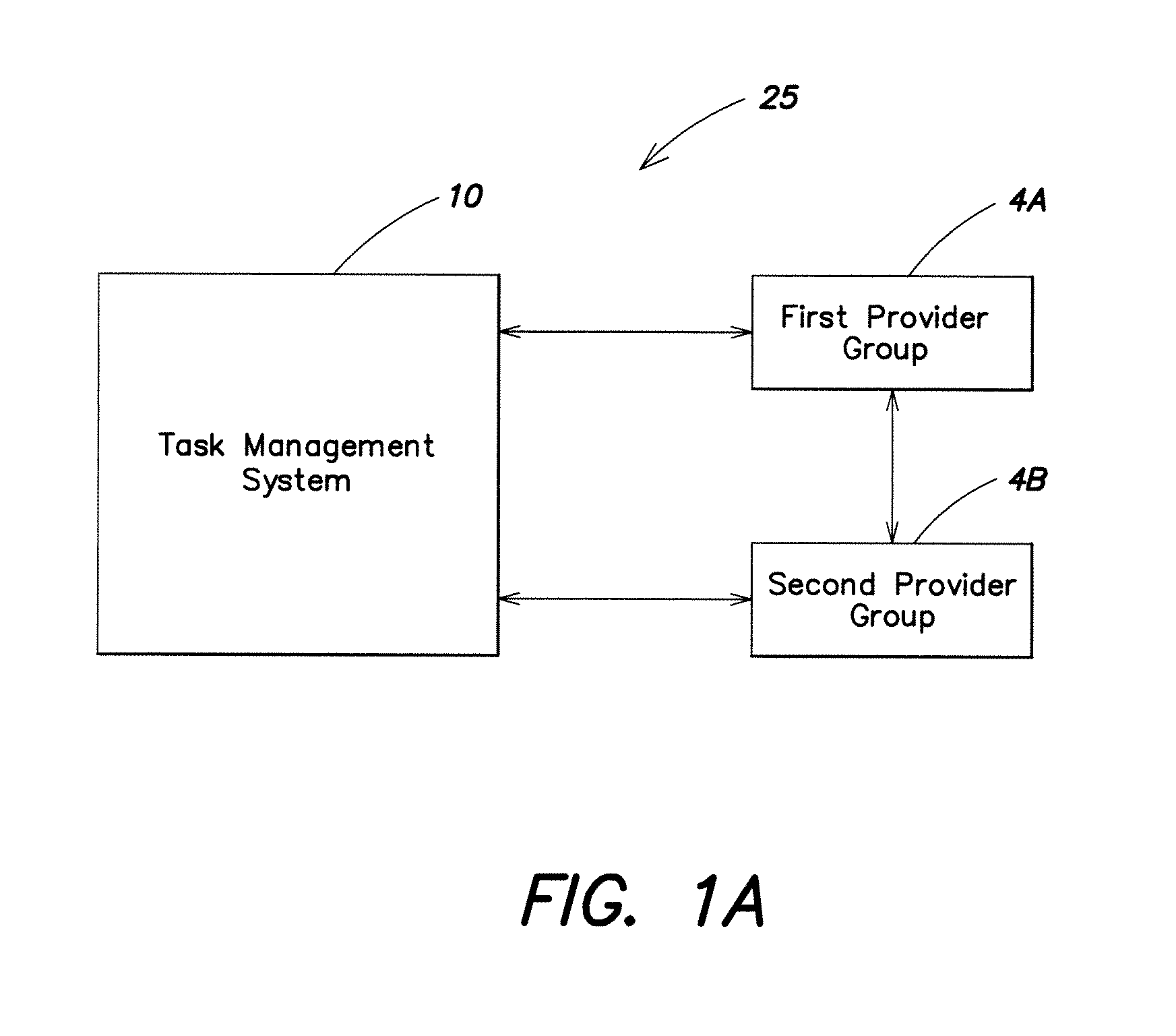Task manager for healthcare providers
a healthcare provider and task manager technology, applied in the field of task manager for healthcare providers, can solve the problems of limiting the distraction and stress imposed on the support staff, their ability to work efficiently, etc., and achieve the effects of reducing labor costs, limiting distraction and stress, and preventing the support staff from being distracted and stressed
- Summary
- Abstract
- Description
- Claims
- Application Information
AI Technical Summary
Benefits of technology
Problems solved by technology
Method used
Image
Examples
embodiment 110
[0149]FIG. 8 illustrates one method embodiment 110 for managing tasks performed by a provider. The method includes generating 112 a prioritized set of tasks for an assigned user, communicating 114 the prioritized tasks to the assigned user, and monitoring 116 responses of the assigned user to the prioritized tasks, wherein the method returns to step 112. For example, the tasks may include accepting or denying a new or rescheduled appointment, printing of patient check-in data, and reminding a patient of an upcoming appointment. The method may be implemented by the system 10 illustrated in FIG. 1, wherein a server includes a task management module (rules engine) 30 and an interface module 20. The modules of server 10 communicate with various databases such as a patient database 16, provider database 17, appointment scheduling database 18 and task database 15, as described above.
embodiment 120
[0150]FIG. 9 illustrates yet another method embodiment 120 of the invention. Here a task module accesses stored patient, provider, appointment, and task data in step 122 in order to partially complete (simplify) one or more tasks while generating the set of prioritized tasks 123. For example, the stored data is used to complete one or more steps of a task, such as filing in the patient's insurance information, before sending the associated provider a request to confirm an appointment with this patient. The provider's staff member is thus relieved of independently determining the patient's insurance information, since it is provided with the confirmation task. The set of prioritized tasks are then dispatched (electronically communicated) to an assigned user (e.g., staff member of the provider) 124. The task module monitors 125 the responses to the communicated tasks, and generates and stores updated patient, provider, appointment and task data based on the user responses 126. During ...
embodiment 150
[0154]FIG. 11 illustrates yet another method embodiment 150 of the invention for monitoring responses and reassigning tasks where a response (indicating completion) is not provided in a designated time. A first step 151 comprises monitoring responses of an assigned user to its assigned prioritized tasks. In the next step 152, it is determined whether a response is received from the user. If no response is received, it is next determined whether the desired response time has been exceeded 158, If not, the process returns to the first step 151 to continue monitoring the responses.
[0155]If a response is received, it is next determined 153 if the task has been completed based on the response content. If not, the method processes 154 the response and updates 157 the task data stored in task database. If the task has been successfully completed, the task data is updated 157. After processing the non-complete response, it is determined 155 whether a reassignment time has been reached. If n...
PUM
 Login to View More
Login to View More Abstract
Description
Claims
Application Information
 Login to View More
Login to View More - R&D
- Intellectual Property
- Life Sciences
- Materials
- Tech Scout
- Unparalleled Data Quality
- Higher Quality Content
- 60% Fewer Hallucinations
Browse by: Latest US Patents, China's latest patents, Technical Efficacy Thesaurus, Application Domain, Technology Topic, Popular Technical Reports.
© 2025 PatSnap. All rights reserved.Legal|Privacy policy|Modern Slavery Act Transparency Statement|Sitemap|About US| Contact US: help@patsnap.com



